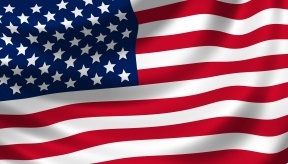By Daniel Nardini
 People I know in Europe see America in the lens of their own history, and people I know in East Asia see the United States in terms of being a political monolith. In the case of Europe, Europeans see the United States now under current U.S. President Donald Trump as an authoritarian state with a dictator at the helm. They see his use of Immigration and Customs Enforcement (ICE) agents going around able at will to “disappear” people akin to the Brown Shirts in the early years of Nazi Germany. Yes, ICE agents in so many cases are doing things that are illegal and spreading fear to many immigrant communities. But, there is also fight-back and governors especially in Democratic-run states simply will not allow ICE agents to do what they please. This is far from the image of what Nazi Germany was. Another problem too many Europeans see is that they think Trump has the carte blanche to do what he wants. He does not. In the federal system that is the government of the United States, more often than not Trump has hit a legal brick wall where he cannot enforce his will. If it is against both the U.S. Constitution and against the state constitutions where the laws of the states prevail then the states more often than not prevail. These were safeguards built into the system so one part of the government cannot not do complete overreach.
People I know in Europe see America in the lens of their own history, and people I know in East Asia see the United States in terms of being a political monolith. In the case of Europe, Europeans see the United States now under current U.S. President Donald Trump as an authoritarian state with a dictator at the helm. They see his use of Immigration and Customs Enforcement (ICE) agents going around able at will to “disappear” people akin to the Brown Shirts in the early years of Nazi Germany. Yes, ICE agents in so many cases are doing things that are illegal and spreading fear to many immigrant communities. But, there is also fight-back and governors especially in Democratic-run states simply will not allow ICE agents to do what they please. This is far from the image of what Nazi Germany was. Another problem too many Europeans see is that they think Trump has the carte blanche to do what he wants. He does not. In the federal system that is the government of the United States, more often than not Trump has hit a legal brick wall where he cannot enforce his will. If it is against both the U.S. Constitution and against the state constitutions where the laws of the states prevail then the states more often than not prevail. These were safeguards built into the system so one part of the government cannot not do complete overreach.
In the case of Asian perceptions, they see the United States as being under the control of one strongman and his party in power. Again, the two stumbling blocks are the U.S. Constitution itself and the independent court system. Trump successfully sent in the U.S. military into Los Angeles and Washington, D.C. He failed to do so to Chicago. This was due to the extreme push-back from both the mayor of Chicago and the governor of Illinois. In Asia this would be inconceivable that any leader of a country can be stopped by local or state or provincial officials from exercising his will. This simply does not happen in Asia, and the political party in power is able to impose its will on the whole country. The courts in Asian countries rarely have the power to block the powers of the national leaders or their ruling political parties in Asia. It simply does not happen. I lived in South Korea, and this basically does not happen. For Asian countries, it is a winner take all scenario. This does not entirely work in the United States. The opposition party can still wield some power and stop even the most abusive national leader from having his way. Again this all goes back to the U.S. Constitution giving the power to the states to run their own affairs. This was created back in the 1780’s as a safety valve to allow the states to have their own autonomy.
One other very important and powerful institution (although unofficial) is the press and the press freedoms that are both in the U.S. Constitution and the state constitutions. The ruling party may brow-beat news media and newspapers, but more often than not the newspapers can and will fight back. Our newspaper is but one example of this. Just as equally important is the fact that Americans can get news and information via the Internet from around the world. As bad as the federal government here is now, it has not figured out a way of cutting off the flow of information from the rest of the world. The federal government has also not been successful overall in intimidating the press, especially the newspapers. This is a far cry from Nazi Germany or the current dictatorship of Viktor Orban in Hungary. Is it to say the United States is not having problems? Yes it is having serious problems. We have a president who is showing all the signs of dementia and who does not understand how government works. We have a presidential cabinet willing to use authoritarian powers not granted in the U.S. Constitution and a U.S. Congress that is little more than a rubber stamp. We have a dangerously fragmented country both politically and socially. Even if we were to take out of the equation the current president and the craven Congress, America is such a divided country that this division will most likely go on long after there is no more Trump, no more MAGA (Make America Great Again) movement, and no more Trump cronies calling the shots. The only good news is that our court system, our governorships, and our press are holding up.
 Ease the Holiday Blues with CDPH Programs December 19, 2025
Ease the Holiday Blues with CDPH Programs December 19, 2025
 Rogers Park Business Alliance Expands Annual Live Love Shop Rogers Park December 18, 2025
Rogers Park Business Alliance Expands Annual Live Love Shop Rogers Park December 18, 2025





Still Trying to Explain to the Outside World
By Daniel Nardini
In the case of Asian perceptions, they see the United States as being under the control of one strongman and his party in power. Again, the two stumbling blocks are the U.S. Constitution itself and the independent court system. Trump successfully sent in the U.S. military into Los Angeles and Washington, D.C. He failed to do so to Chicago. This was due to the extreme push-back from both the mayor of Chicago and the governor of Illinois. In Asia this would be inconceivable that any leader of a country can be stopped by local or state or provincial officials from exercising his will. This simply does not happen in Asia, and the political party in power is able to impose its will on the whole country. The courts in Asian countries rarely have the power to block the powers of the national leaders or their ruling political parties in Asia. It simply does not happen. I lived in South Korea, and this basically does not happen. For Asian countries, it is a winner take all scenario. This does not entirely work in the United States. The opposition party can still wield some power and stop even the most abusive national leader from having his way. Again this all goes back to the U.S. Constitution giving the power to the states to run their own affairs. This was created back in the 1780’s as a safety valve to allow the states to have their own autonomy.
One other very important and powerful institution (although unofficial) is the press and the press freedoms that are both in the U.S. Constitution and the state constitutions. The ruling party may brow-beat news media and newspapers, but more often than not the newspapers can and will fight back. Our newspaper is but one example of this. Just as equally important is the fact that Americans can get news and information via the Internet from around the world. As bad as the federal government here is now, it has not figured out a way of cutting off the flow of information from the rest of the world. The federal government has also not been successful overall in intimidating the press, especially the newspapers. This is a far cry from Nazi Germany or the current dictatorship of Viktor Orban in Hungary. Is it to say the United States is not having problems? Yes it is having serious problems. We have a president who is showing all the signs of dementia and who does not understand how government works. We have a presidential cabinet willing to use authoritarian powers not granted in the U.S. Constitution and a U.S. Congress that is little more than a rubber stamp. We have a dangerously fragmented country both politically and socially. Even if we were to take out of the equation the current president and the craven Congress, America is such a divided country that this division will most likely go on long after there is no more Trump, no more MAGA (Make America Great Again) movement, and no more Trump cronies calling the shots. The only good news is that our court system, our governorships, and our press are holding up.